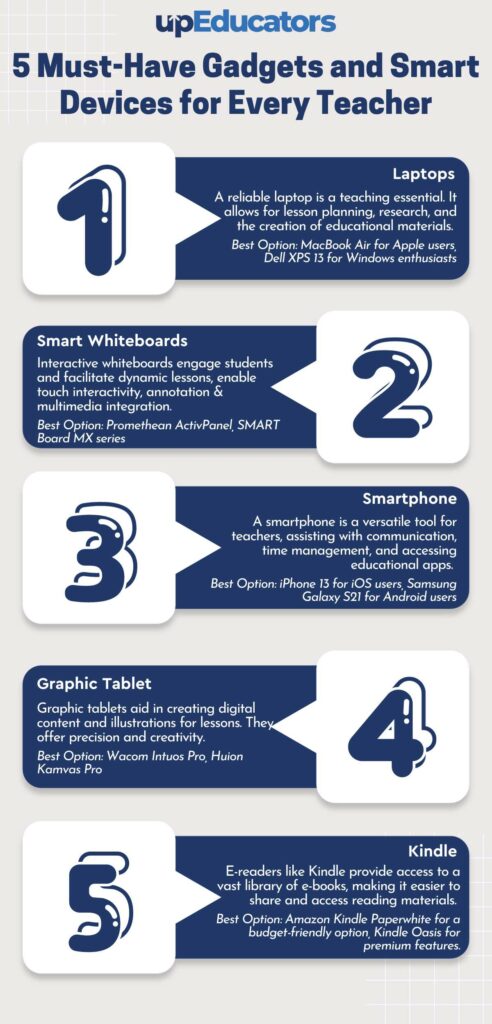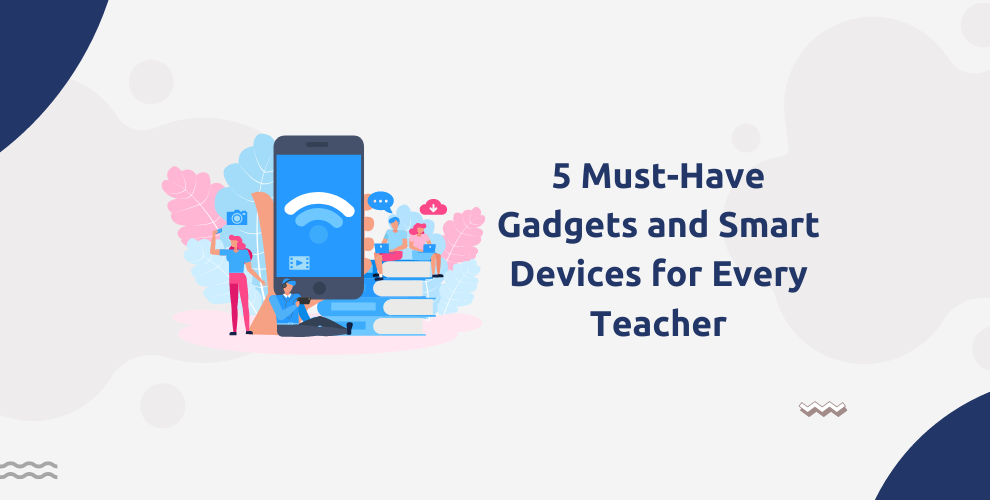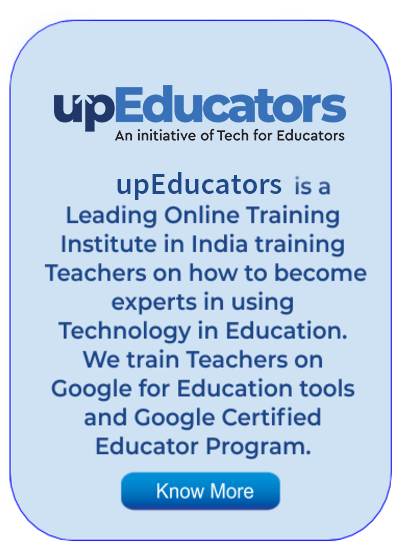During a job interview at a school, two teachers were asked to create a presentation on their teaching philosophy and methodology. The first teacher, who was not very tech-savvy, created a presentation using traditional tools such as handwritten notes, posters, and physical props. While the presentation was informative, it lacked the visual and interactive elements that would have made it engaging and memorable.
The second teacher, who was tech-savvy and had digital skills, created a presentation using a smart whiteboard and digital tools such as multimedia content, interactive games, and videos. The presentation was not only informative but also engaging, interactive, and visually appealing, making it stand out from the first teacher’s presentation. As a result, the school hired a second teacher, who demonstrated digital skills and the ability to use technology effectively to enhance the teaching and learning experience.
This incident throws light on the importance of technology in every walk of life including teaching.

Why is using technology important for teachers?
Using technology in education has become increasingly important for teachers for several reasons:
- Enhancing student engagement: Technology can make learning more interactive and engaging for students. It can help students visualize concepts, participate in simulations, and collaborate with their peers, which can make learning more interesting and fun.
- Providing personalized learning experiences: Technology can be used to create personalized learning experiences for students. Teachers can use learning management systems (LMS) to create adaptive assessments and provide targeted feedback to help students improve their skills and knowledge.
- Accessing a wide range of resources: Technology can give teachers access to a vast array of resources, including online articles, videos, and educational games. This can help teachers supplement their lesson plans and provide students with a richer learning experience.
- Improving communication and collaboration: Technology can facilitate communication and collaboration between teachers, students, and parents. For example, teachers can use communication tools like email, messaging apps, and video conferencing to communicate with students and their families.
- Preparing students for the future: Technology is ubiquitous in today’s world, and using technology in the classroom can help students develop the digital literacy skills they need to succeed in their future careers. By integrating technology into their teaching practices, teachers can help prepare their students for a world that is increasingly dependent on technology.
Teachers are the force behind educating young learners and preparing them for the future. Thus, teachers need to upskill and become tech-savvy to walk shoulder-to-shoulder with the younger generation that is always active on the internet. The first step towards becoming a tech-savvy teacher is to become befriend smart devices for everyday use for work and personal life.
5 Must-Have Devices for Teachers
In today’s digital age, teachers need smart devices to enhance their teaching and provide a better learning experience for their students. Smart devices such as smartphones, tablets, and laptops provide teachers with easy access to information, organizational tools, and communication platforms. They can quickly search for information, take notes, schedule appointments, and communicate with students, parents, and colleagues.
With the help of smart devices, teachers can manage their classrooms more effectively, provide better instruction, and stay connected with their students, parents, and peers. Here are 5 smart devices that every teacher needs.
Laptop:
Laptops have become an essential tool for teachers, as they provide a range of benefits that are not possible with other devices. A laptop is a portable device that can be taken anywhere, making it easy for teachers to prepare their lessons, grade assignments, and complete administrative tasks on the go.
Additionally, laptops offer a wide range of software options that can be used for lesson planning, grading, creating presentations, and accessing educational resources. Finally, laptops are versatile and can be used for a range of tasks, from creating graphics to recording video lessons. With these advantages, it is clear why every teacher needs a laptop in today’s digital age to enhance their teaching, streamline their work and improve their overall effectiveness.
Smart Whiteboards:
Smart whiteboards are becoming increasingly popular in classrooms around the world as they offer a range of benefits to both teachers and students. Smart whiteboards provide an interactive and engaging learning experience, allowing teachers to incorporate multimedia content, interactive games, and videos into their lessons.
Moreover, smart whiteboards enable teachers to save their notes, lessons, and presentations digitally, making it easier to share, review, and edit the content with students and colleagues.
Smart whiteboards offer a range of tools such as handwriting recognition, shape recognition, and multimedia embedding, which help teachers to create interactive and engaging lessons quickly and efficiently. Finally, smart whiteboards offer a more eco-friendly alternative to traditional whiteboards, as they eliminate the need for paper-based teaching materials.
Smartphone:
Smartphones provide teachers with the ability to communicate with students, parents, and colleagues instantly. They can use text messaging, email, or instant messaging apps to stay in touch and share information with their students or parents in real time.
Moreover, smartphones can be used to access a range of educational apps that can assist with lesson planning, grading, and research. These apps can provide teachers with a wealth of information and resources at their fingertips.
Furthermore, smartphones provide teachers with the ability to take photos or videos of classroom activities, which can be used for assessment, reflection, and sharing with parents. Finally, smartphones provide teachers with a convenient tool to manage their schedules and reminders, ensuring they stay organized and on top of their workload.
Graphic Tablet:
Graphic tablets, also known as digitizing tablets or drawing tablets, are devices that allow users to create digital images by drawing directly onto the tablet’s surface with a stylus or pen-like tool. They are becoming increasingly popular among teachers and educators due to their many benefits in facilitating teaching and learning.
Graphic tablets can be used as a replacement for traditional interactive whiteboards. Instead of using a projector and a board, teachers can simply connect the graphic tablet to a computer and project their screen onto a larger display. This allows teachers to annotate slides, draw diagrams, and solve problems in real-time, providing a more engaging learning experience for students.
Kindle:
Kindle devices offer a portable and lightweight option for reading and accessing e-books, making it easy for teachers to carry a vast library of books and educational materials with them wherever they go. Secondly, a Kindle device allows teachers to easily access and download e-books, textbooks, and other educational materials, often at a more affordable price than traditional books. Thirdly, a Kindle device provides a range of features such as highlighting, note-taking, and dictionary lookup, making it easier for teachers to annotate and reference texts while preparing lessons. Finally, a Kindle device offers a distraction-free reading experience, free from notifications, pop-ups, and other distractions that can interfere with reading and concentration
From creating engaging and interactive lessons to managing their workload, these smart devices provide teachers with the tools they need to succeed in today’s digital age. As technology continues to advance, it is essential for teachers to embrace these devices and use them to their full potential to provide the best possible education for their students.
If you are a teacher who is looking for career enhancement opportunities with digital skills then upEducators is the right place for you. Choose from a wide range of courses by upEducators that train teachers in using digital tools and skills in the teaching learning process. Become a master in using smart tools, devices and technologies with these courses.
Author: This article is written by Samiya Rashid for upEducators blog.




